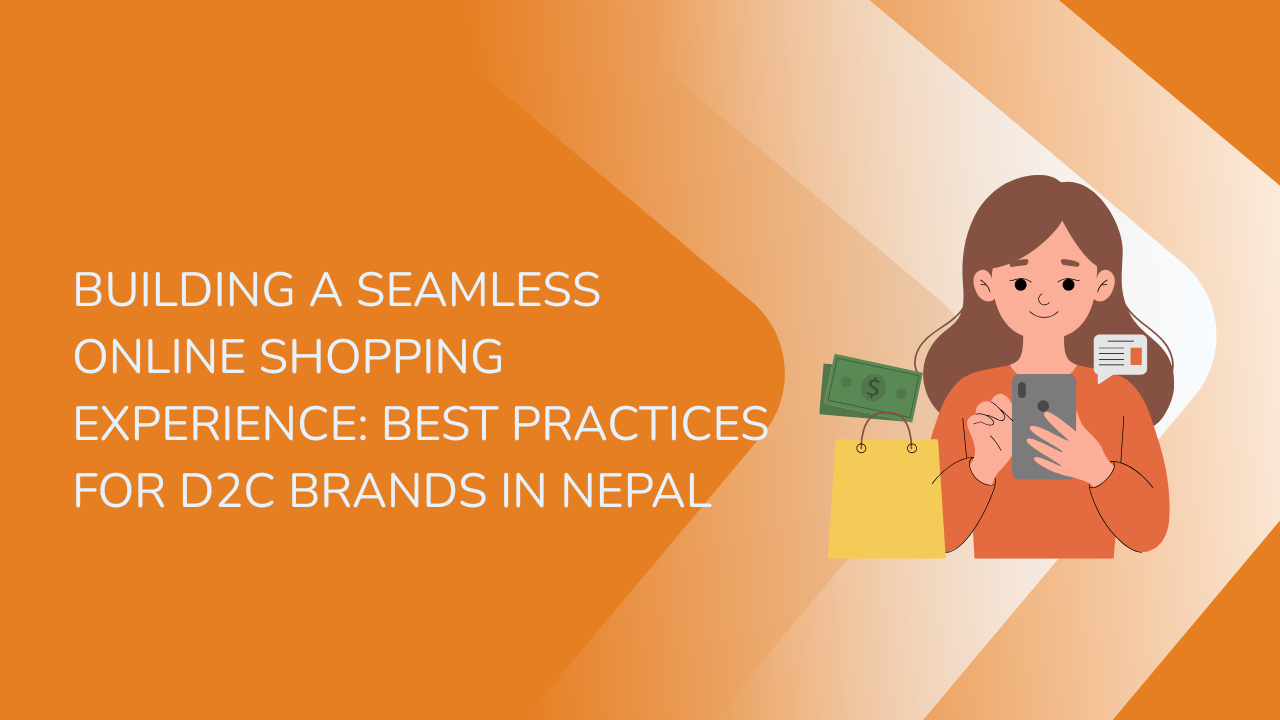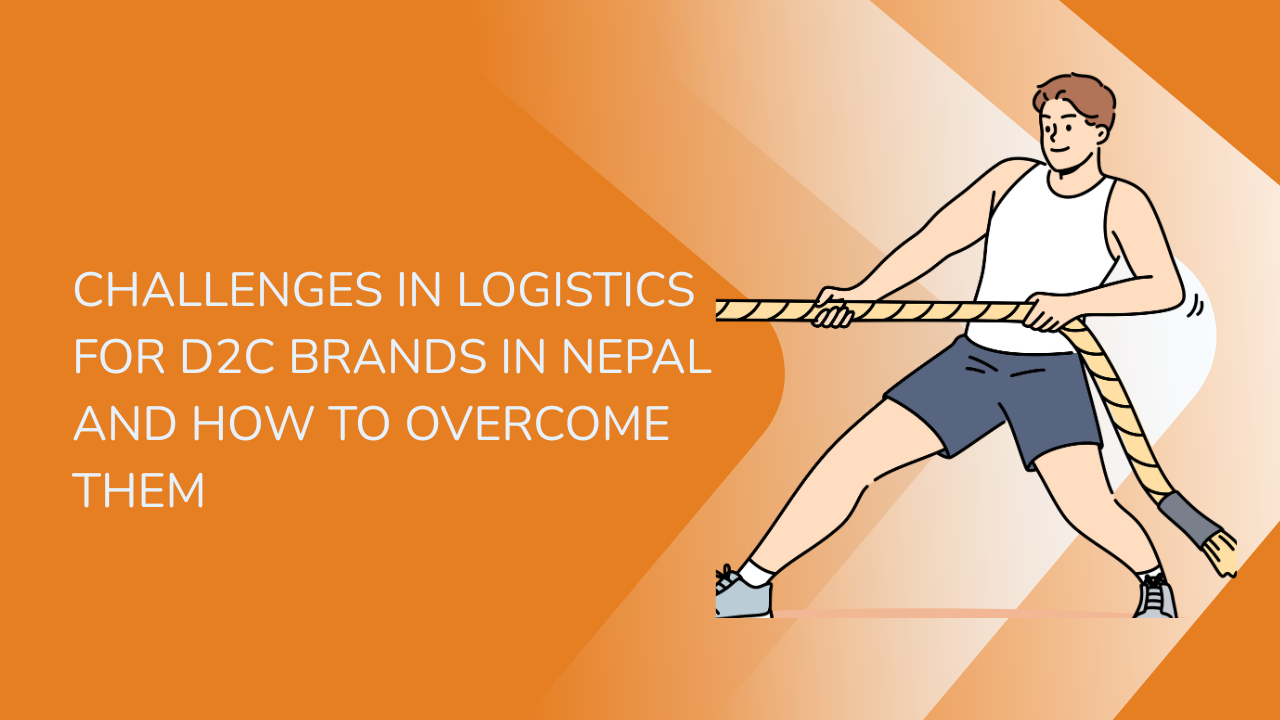Share this Article
In the last decade, the landscape of Nepal’s retail and consumer market has undergone a substantial transformation, largely due to the rise of digital technology. The advent of the internet, smartphones, and mobile technology has brought about an era where businesses can now directly reach consumers, bypassing traditional intermediaries. This shift has been particularly evident with the rise of Direct-to-Consumer (D2C) brands in Nepal. D2C is a business model that allows brands to engage directly with their customers, using online channels to build brand awareness, enhance customer engagement, and drive sales.
In this article, we explore how digital marketing has reshaped the D2C ecosystem in Nepal, the different strategies these brands are employing, and the impact of digital marketing on the consumer landscape.
Defining D2C in the Context of Nepal
In Nepal, the D2C model has gained momentum in recent years. Traditional retail often involves multiple intermediaries such as wholesalers, distributors, and retailers. However, D2C brands cut out these middlemen by selling their products directly to consumers, primarily through digital platforms. This model is gaining popularity because of the efficiency it offers in terms of cost and direct interaction with consumers.
D2C brands in Nepal range from local food startups, beauty and skincare brands, fashion labels, to tech companies. These brands are particularly thriving by tapping into the growing online presence of Nepali consumers and delivering a more personalized shopping experience. The ability to control the entire customer journey—from marketing to delivery—has allowed D2C brands to build strong customer loyalty and brand recognition.
The Growth of Digital Marketing in Nepal
Several factors have contributed to the rise of digital marketing in Nepal. Key factors driving this transformation include:
- Increased Internet Usage: As of 2024, Nepal boasts over 17 million internet users, a significant portion of the population. With affordable smartphones and growing internet penetration, the online marketplace has expanded exponentially. Digital platforms such as social media and e-commerce websites have opened new avenues for D2C brands to connect with consumers.
- Social Media Popularity: Social media platforms like Facebook, Instagram, and TikTok have grown immensely popular in Nepal, offering a massive audience base for D2C brands. These platforms provide businesses with the ability to engage with customers through organic posts, sponsored ads, and influencer partnerships. Social media’s ability to reach a broad, diverse audience makes it an essential component of digital marketing strategies for D2C brands.
- E-Commerce Growth: E-commerce platforms such as Daraz, SastoDeal, and HamroBazar are gaining traction in Nepal. These platforms allow consumers to shop online, and more importantly, they serve as a launchpad for D2C brands to establish their own digital storefronts. This expansion of e-commerce in Nepal is enabling D2C brands to bypass the need for physical retail stores, further growing their market reach.
- Youth Demographics: Nepal has a youthful population, with a large percentage under the age of 35. This age group is more inclined to use digital platforms for shopping and consuming content. As a result, D2C brands are targeting this tech-savvy demographic by leveraging digital marketing strategies tailored to online behaviors.
Digital Marketing Strategies Transforming Nepal's D2C Ecosystem
D2C brands in Nepal are increasingly adopting digital marketing strategies that directly connect them with their target audience. These strategies include a combination of social media marketing, content creation, influencer marketing, paid advertising, and email campaigns.
1. Social Media Marketing
Social media is one of the most powerful tools for building brand visibility, engagement, and sales for D2C brands in Nepal. With platforms like Facebook, Instagram, and TikTok gaining massive traction in the country, brands are able to create a direct line of communication with their customers.
For instance, Nepali fashion brands leverage Instagram to showcase their latest collections through visually appealing images and videos. Instagram’s algorithm and paid advertisement options allow brands to target specific audiences based on demographics, interests, and behaviors, making it a prime tool for reaching potential customers. Additionally, Instagram stories and Facebook ads are commonly used to promote flash sales, new arrivals, or limited-time offers.
The rise of TikTok in Nepal has also allowed brands to tap into a younger, trend-driven audience, with creative short videos and influencer collaborations that engage and entertain while promoting products.
2. Content Marketing
Content marketing is a strategy that focuses on creating valuable, relevant content to attract, engage, and retain customers. D2C brands in Nepal are using blogs, videos, podcasts, and infographics to educate their customers, promote their products, and build their brand.
For example, skincare brands are creating content that educates consumers about the benefits of their products, skincare routines, and the importance of using natural ingredients. By providing educational content, these brands build trust with customers and position themselves as industry leaders.
SEO (Search Engine Optimization) is another key component of content marketing. Brands optimize their content to ensure that their products appear in search engine results when potential customers search for relevant terms. SEO helps D2C brands improve their organic reach, drive website traffic, and ultimately increase conversions.
3. Influencer Marketing
Influencer marketing has become one of the most effective tools in the digital marketing arsenal of D2C brands in Nepal. By partnering with influencers—individuals with a strong online presence—brands can increase their reach, credibility, and social proof. Influencers provide authenticity, and their endorsement of a product can have a significant impact on purchasing decisions.
Nepali influencers in sectors such as beauty, fitness, fashion, and lifestyle have become key partners for D2C brands. For instance, local beauty brands collaborate with influencers who have a large following on Instagram and YouTube to review and demonstrate their products. Influencers often share discount codes with their followers, which helps drive sales for D2C brands.
Through influencer marketing, D2C brands can target specific niches, such as eco-conscious consumers or beauty enthusiasts, and tailor their messages to resonate with these groups.
4. Email Marketing
Email marketing continues to be an essential tool for D2C brands looking to nurture customer relationships in Nepal. By collecting email addresses through website sign-ups, product purchases, or social media campaigns, brands can communicate directly with their customers.
Brands send personalized emails with offers, product recommendations, and updates on new launches. For instance, fashion D2C brands often send out personalized emails to subscribers showcasing products based on their previous purchases or browsing history. The targeted nature of email marketing increases the likelihood of conversions and repeat purchases.
Email marketing is also an excellent tool for keeping customers informed about seasonal sales or flash deals, creating a sense of urgency that drives immediate purchases.
5. Paid Search and Retargeting
Paid search advertising, including Pay-Per-Click (PPC) campaigns on search engines like Google, has been a valuable strategy for D2C brands in Nepal. With Google Ads, brands can display their products when consumers search for related keywords, driving targeted traffic to their websites.
Retargeting is another effective tactic where brands use cookies to track visitors who have interacted with their websites. These consumers, who may have abandoned a shopping cart or browsed products without purchasing, are then shown ads across various platforms to encourage them to return and complete their purchase. Retargeting increases conversion rates by keeping brands top-of-mind and providing personalized ads to users based on their online behavior.
6. Video Marketing
Video marketing has become one of the most compelling ways for D2C brands in Nepal to engage with their audience. Video content, whether on YouTube, Instagram, or Facebook, is highly engaging and offers brands an opportunity to showcase their products in action.
For instance, a local food brand might create recipe videos using its products, or a fashion brand might produce video content showing how their clothing can be styled for different occasions. Video marketing not only builds brand awareness but also fosters a stronger emotional connection with customers. Additionally, live streaming offers D2C brands a real-time opportunity to interact with their customers, answer questions, and showcase products.
Challenges Faced by D2C Brands in Nepal
While the D2C ecosystem in Nepal has shown impressive growth, several challenges persist that hinder brands from fully capitalizing on digital marketing. These challenges include:
- Limited Internet Access in Rural Areas: While urban areas have relatively high internet penetration, rural regions of Nepal still face challenges with reliable internet access. This restricts the potential for D2C brands to tap into the rural market, which makes up a significant portion of the population.
- Delivery and Logistics Issues: One of the primary challenges for D2C brands is ensuring efficient delivery, especially in remote areas where transportation infrastructure is underdeveloped. Delays and damage during shipment can negatively impact customer experience and brand reputation.
- Building Consumer Trust: Online shopping is still a relatively new concept for many consumers in Nepal, particularly in rural areas. D2C brands must work harder to establish trust and credibility, as some consumers remain skeptical about online transactions, quality of products, and delivery.
- Digital Literacy: While the younger generation is tech-savvy, a large portion of the Nepali population is still not fully literate in digital technologies. This limits the reach of D2C brands and requires brands to invest in digital education campaigns.
Conclusion: The Future of D2C in Nepal
Digital marketing is undeniably shaping the D2C landscape in Nepal, offering brands an unparalleled opportunity to directly engage with their consumers. With the growing number of internet users, increasing social media activity, and the rise of e-commerce platforms, D2C brands are well-positioned to succeed in this rapidly evolving market.
In the coming years, we can expect digital marketing strategies to become more sophisticated, with even more personalized content and innovative marketing techniques. As the D2C ecosystem continues to mature, these brands will play a crucial role in Nepal’s economic and retail landscape, contributing to the growth of a more direct and consumer-centric market.
For D2C brands in Nepal, embracing digital marketing strategies that prioritize customer engagement, transparency, and authenticity will be key to long-term success. By adapting to consumer preferences and leveraging the latest digital tools, D2C brands can not only enhance their visibility but also build lasting relationships with their audience.
Categories:
Marketing & Growth
Tags:
Digitalmarketingnepal







